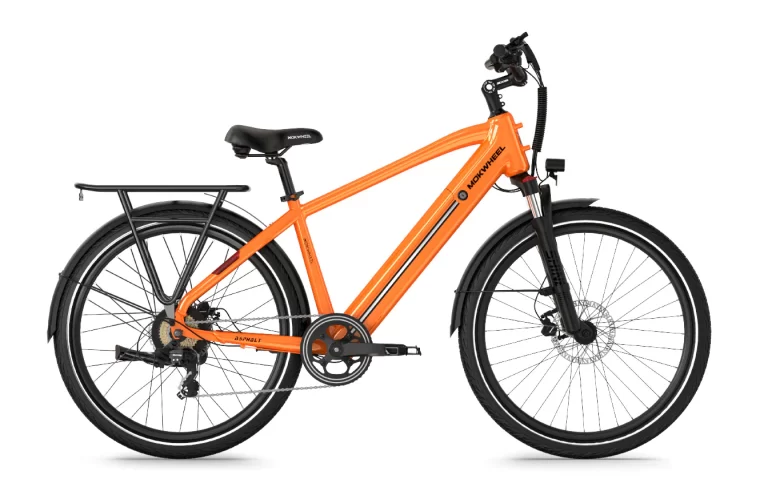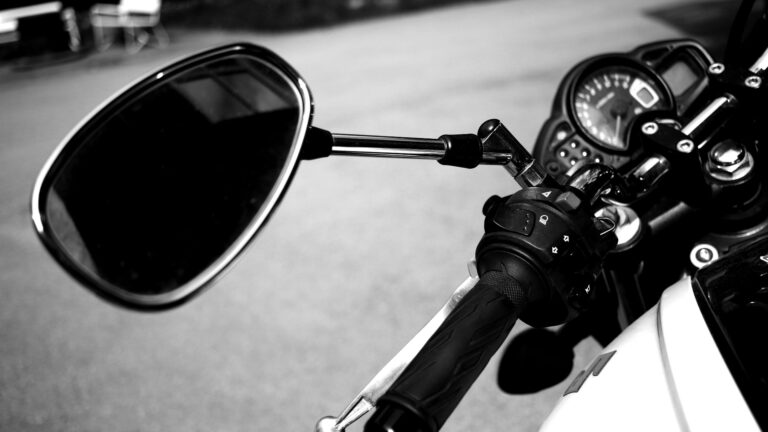What is the Weight Limit for Riding an Electric Bike?
Electric bikes, or e-bikes, have witnessed a surge in popularity in recent years, revolutionizing the way we commute, exercise, and explore our surroundings. With their pedal-assist technology and eco-friendly appeal, e-bikes have become a favored mode of transportation for urban commuters and outdoor enthusiasts alike.
However, amidst the excitement of embracing this innovative mode of travel, it’s crucial to prioritize safety above all else. One of the fundamental aspects of safe e-bike riding is understanding and adhering to the weight limit specifications set by manufacturers. Electric bike weight capacity varies depending on the manufacturers with some having a weight limit of 220 on up to 300 pounds. But why is knowing the weight limit so important?
Imagine going on a leisurely ride through city streets or winding mountain trails, only to encounter stability issues or structural strain due to exceeding the bike’s weight capacity. Such scenarios not only compromise your safety but also diminish the overall riding experience.
Therefore, in this comprehensive guide, we will learn the significance of knowing the weight limit for riding an electric bike. From understanding the implications of exceeding weight thresholds to exploring how weight limits are determined, we equip you with the knowledge needed to make informed decisions and enjoy your e-bike adventures safely and confidently.
Key Takeaways
- Understand the weight limit specified by the manufacturer.
- Consider factors such as frame material and motor power.
- Review weight capacity charts provided by manufacturers.
- Avoid exceeding the recommended weight limit for safety.
- Seek advice from bike experts for personalized recommendations.
- Regularly maintain your e-bike to ensure optimal performance.
- Enjoy riding within the specified weight limit for a comfortable and safe experience.
What is the Weight Limit for Riding an Electric Bike?
The weight limit for riding an electric bike refers to the maximum load capacity that the bike can safely support while maintaining optimal performance and structural integrity. It’s a crucial parameter set by manufacturers to ensure rider safety and bike longevity. Understanding and adhering to this weight limit is paramount for a safe and enjoyable riding experience.
Several factors influence the weight limit of an electric bike, with bike design, motor power, and frame material playing significant roles:
1. Bike Design: The overall design of the electric bike, including its frame geometry and construction, influences its weight-bearing capacity. Bikes with robust frames and well-engineered components can typically accommodate higher weight limits compared to lighter or more compact models.
2. Motor Power: The power of the electric motor directly impacts the bike’s ability to support heavier riders. Higher wattage motors often provide greater torque and propulsion, which can compensate for added weight. However, exceeding the motor’s capacity may lead to decreased performance and accelerated wear and tear.
3. Frame Material: The material used in constructing the bike’s frame also affects its weight limit. Aluminum alloys are commonly used in e-bike frames due to their lightweight yet durable properties. However, some e-bikes may feature steel frames, which offer greater strength but may add to the overall weight of the bike.
By considering these factors and adhering to the specified weight limit, riders can ensure optimal safety and performance while enjoying their electric bike journeys. It’s essential to consult the manufacturer’s guidelines and recommendations to determine the suitable weight limit for your specific e-bike model.
RELATED CONTENT – How Much Do Electric Bikes Weigh?
RELATED CONTENT – Review of the Mokwheel Asphalt Electric Bike
Factors Determining Weight Limit
Understanding the factors that influence the weight limits for electric bikes (e-bikes) is essential for riders to make informed decisions about their choice of bike and ensure a safe and enjoyable riding experience. Several key factors contribute to determining the weight limits of e-bikes:
1. Maximum Rider Weight: E-bike manufacturers typically specify a maximum rider weight that their bikes can safely accommodate. This weight limit accounts for the combined weight of the rider and any additional gear or cargo carried during rides. Exceeding this maximum rider weight can strain the bike’s components and compromise its stability and performance, posing safety risks for the rider.
2. Bike Design and Construction: The design and construction of the e-bike play a crucial role in determining its weight-bearing capacity. Bikes with robust frames, reinforced components, and well-engineered suspension systems are generally capable of supporting higher weight limits. Additionally, factors such as frame geometry, wheel size, and overall bike geometry can impact weight distribution and stability, affecting the bike’s ability to carry heavier loads.
3. Weight Capacity Chart: Many e-bike manufacturers provide weight capacity charts or guidelines that specify the recommended weight limits for their different bike models. These charts often categorize weight limits based on rider size and intended usage, helping riders select the most suitable e-bike for their needs. Consulting these weight capacity charts can ensure that riders stay within safe weight limits and avoid overloading their bikes.
4. Rider Weight Restrictions: In addition to considering the maximum rider weight specified by the manufacturer, riders should also be aware of any specific weight restrictions or recommendations provided for individual bike components. For example, certain e-bike models may have weight restrictions for the front or rear racks, batteries, or suspension systems. Adhering to these rider weight restrictions helps prevent damage to the bike and ensures optimal performance during rides.
By taking these factors into account and adhering to the recommended weight limits and guidelines provided by e-bike manufacturers, riders can enjoy a safe and comfortable riding experience while maximizing the longevity and performance of their electric bikes. Regularly checking weight capacity charts, maintaining proper bike maintenance, and distributing weight evenly during rides are essential practices for ensuring the safety and longevity of e-bikes.
RELATED CONTENT – The Best Bike Racks for Ebikes
RELATED CONTENT – Mokwheel Obsidian Electric Bike Review
Electric Bike Weight Capacity Chart
Here’s a detailed chart providing information on the weight limit for electric bike riders.
| Brand | Model | Weight Limit (lbs) | Frame Material | Motor Power (Watts) | Additional Notes |
|---|---|---|---|---|---|
| Rad Power Bikes | RadCity | 275 | Aluminum alloy | 750 | Designed for riders up to 275 lbs. Features sturdy frame and powerful motor. |
| Trek | Verve+ 2 | 300 | Aluminum alloy | 250 | Supports riders up to 300 lbs. Offers a comfortable and stable ride for heavier individuals. |
| Specialized | Turbo Vado 4.0 | 275 | Aluminum alloy | 350 | Recommended weight limit of 275 lbs. Provides a smooth and responsive ride experience. |
| Giant | Explore E+ 4 GTS | 265 | Aluminum alloy | 500 | Suitable for riders weighing up to 265 lbs. Offers reliable performance and durability. |
| Cannondale | Quick Neo EQ | 250 | Aluminum alloy | 250 | Designed for riders up to 250 lbs. Features lightweight construction and efficient motor. |
| Ancheer | Folding Electric | 220 | Steel | 250 | Supports riders up to 220 lbs. Folding design for convenient storage and transportation. |
| Magnum | Metro+ | 300 | Aluminum alloy | 500 | Recommended weight limit of 300 lbs. Provides a smooth and stable ride for heavier riders. |
| Juiced Bikes | CrossCurrent S2 | 275 | Aluminum alloy | 750 | Designed for riders up to 275 lbs. Offers high performance and long-range capabilities. |
RELATED CONTENT – Guide to Choosing the Right Electric Bike Battery
RELATED CONTENT – Should you Get Insurance for Your Electric Bike?
FAQs
The maximum rider weight for an electric bike varies depending on the specific model and manufacturer. It’s essential to consult the manufacturer’s guidelines to determine the recommended weight limit for your e-bike.
The weight limit for electric bicycle riders typically ranges from around 220 lbs to 300 lbs, depending on the e-bike model and design. However, it’s crucial to check the weight capacity chart provided by the manufacturer for accurate information.
Most manufacturers provide weight capacity charts either in the e-bike’s user manual or on their official website. These charts outline the maximum rider weight and any other weight restrictions specific to each e-bike model.
Yes, some electric bikes may have rider weight restrictions to ensure optimal performance and safety. These restrictions are typically outlined in the e-bike’s user manual or weight capacity chart. It’s essential to adhere to these restrictions to avoid potential damage to the bike or risk of injury.
Absolutely! Electric bikes are designed to accommodate riders of various shapes and sizes. However, it’s essential for overweight riders to select an e-bike with a weight limit that comfortably supports their weight. Consulting the manufacturer’s guidelines and test riding different models can help find the right fit.
Exceeding the weight limit of an electric bike can negatively impact its performance, including reduced battery range, slower acceleration, and increased strain on the motor and frame. Adhering to the specified weight limit helps maintain optimal performance and prolongs the lifespan of the e-bike.
Conclusion
Understanding the weight limit for riding an electric bike is essential for ensuring both safety and optimal performance during your rides. By adhering to the specified weight limits set by manufacturers and considering factors such as bike design, motor power, and frame material, riders can enjoy their e-bike adventures with confidence and peace of mind.
As you venture on your journey with electric bikes, remember to consult the manufacturer’s guidelines and recommendations to determine the appropriate weight limit for your specific e-bike model. Whether you’re commuting through city streets or exploring rugged terrains, prioritizing safety should always be your top priority.
We hope this guide has provided valuable insights into the significance of knowing and respecting weight limits for electric bikes. If you have any questions or would like to share your experiences, we encourage you to leave a comment below. Your feedback is invaluable and can help fellow riders make informed decisions about their e-bike journeys.
Join the Conversation
Have questions or insights to share? We’d love to hear from you! Leave a comment below and join the conversation. Don’t forget to share this guide with friends and fellow e-bike enthusiasts who might benefit from this valuable information. Happy riding!
External Sources
- Manufacturer Websites:
- Visit the official websites of electric bike manufacturers to access detailed specifications and guidelines regarding weight limits. Manufacturers often provide comprehensive information about their products, including recommended weight capacities and maintenance tips.
- Industry Articles:
- Explore industry-leading publications and online resources dedicated to electric bikes. Articles from sources like Electric Bike Review, Bike Radar, and Bicycling.com offer insightful reviews, comparisons, and discussions on e-bike weight limits, performance, and safety considerations.
- Expert Reviews:
- Seek out expert reviews and recommendations from trusted sources in the cycling community. Websites such as Cycling Weekly and Electric Bike Report feature in-depth reviews and analysis conducted by experienced cyclists and e-bike enthusiasts. These reviews often provide valuable insights into the weight limits of specific e-bike models and their suitability for various riders.
Kristina Grant is not just an enthusiast but a true authority on electric bikes. Nestled in the coastal beauty of Virginia, Kristina has found the perfect backdrop for her passion for electric biking. As a dedicated wife and homeschooling mom, her life revolves around family, faith, and the thrill of adventure.
Originally hailing from Ohio, Kristina's journey with electric bikes began as a curiosity and quickly evolved into a deep expertise. Her blog is a testament to her love for electric biking, combining her fascination for eco-friendly transportation with her coastal lifestyle.
When she's not cruising the beach on her electric bike, you'll find Kristina indulging in her other loves: long walks along the shore, getting lost in a good book, and cherishing moments with her loved ones. With a heart as big as her love for animals, especially cats, Kristina brings a unique perspective to the electric bike world, grounded in her strong faith in God and her dedication to a sustainable lifestyle.
Through her blog, Kristina shares her extensive knowledge of electric bikes, offering valuable insights, tips, and recommendations to fellow enthusiasts. Whether you're a seasoned rider or a newcomer to the electric bike scene, Kristina's blog is your go-to source for all things electric biking, fueled by her passion, expertise, and the scenic beauty of coastal Virginia.







